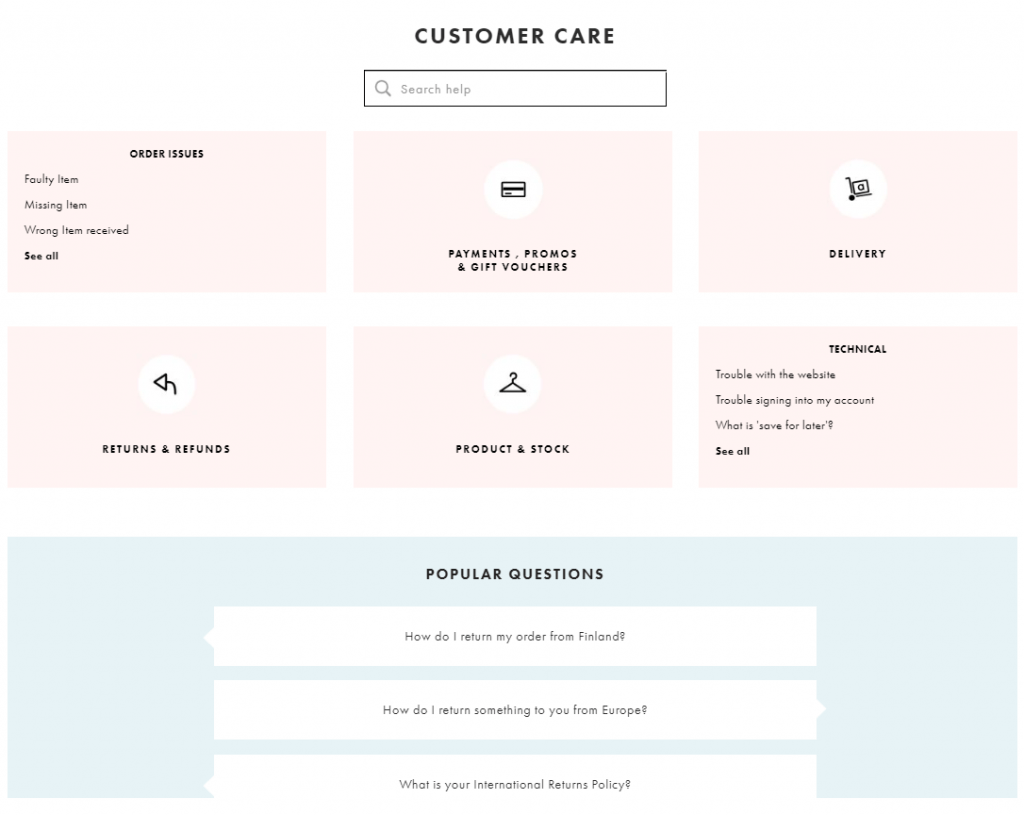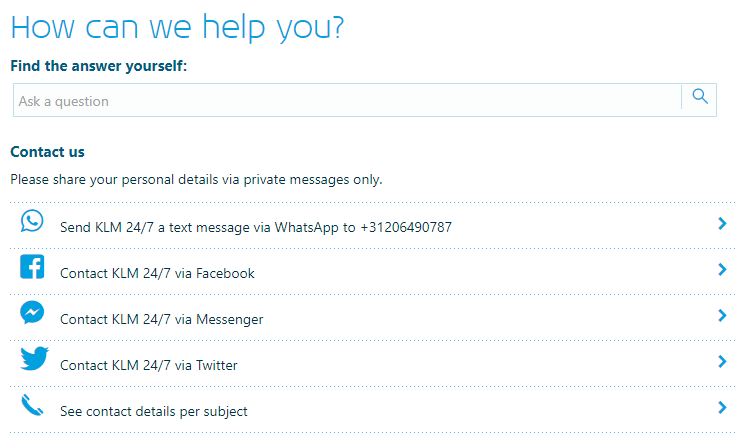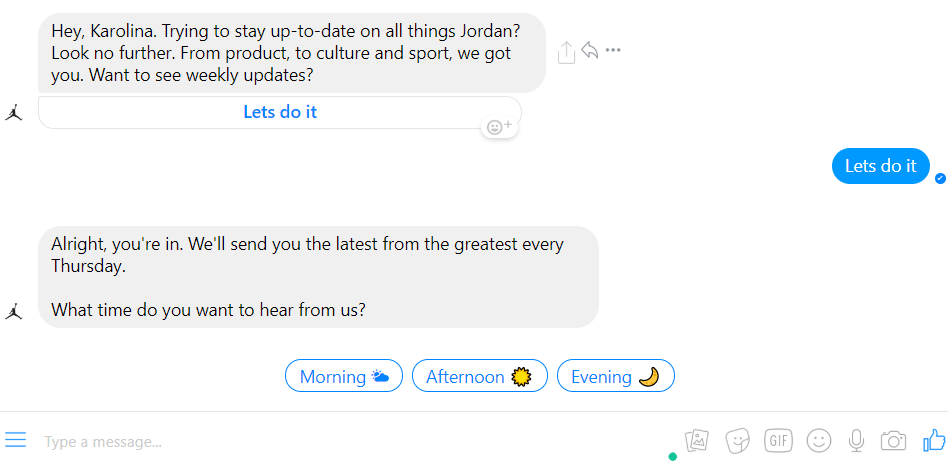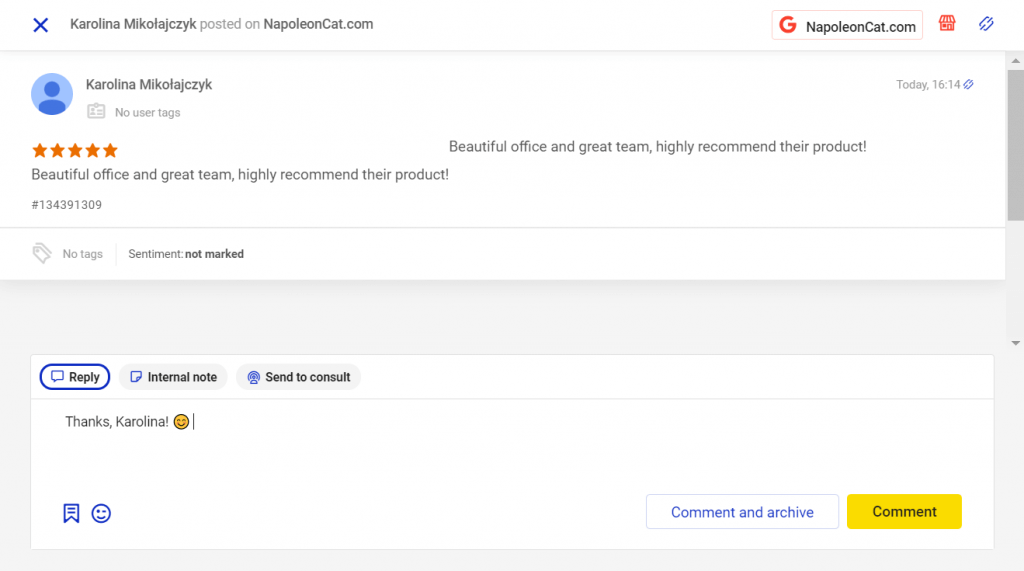While predictions of ecommerce wiping out traditional retail might be premature, digital sales are steadily increasing year by year. Forecasts speak of ecommerce making up over 15% of all retail sales by 2022. That’s a lot of potential new business heading your way. Are you ready? Do you have a top-quality customer service strategy in place?
Customer care in ecommerce has its own rules. See how it’s different from brick and mortar customer service and learn the best practices you should keep top of mind to make sure you’re providing your customers with all the help and information they need, exactly where and when they need it.
The customer experience: online vs. offline
Online shopping is, in a lot of ways, more convenient for customers than traditional retail. Anyone can browse your shop and place orders without leaving the comfort of their homes. They can take as much time as they need and shop whenever they please.
But the detachment of the customer experience from a brick and mortar setting also brings about some challenges. Traditional retail allows store owners to immerse customers in a multifaceted experience that includes a carefully designed space, thoughtful merchandising, lighting that highlights the products on display, music, and sometimes even scents. Finally, there’s trained staff that manages customer satisfaction hands-on and in real-time.
All of these elements build a shopping experience consistent with the business’s brand image and effectively help guide customers through their journey to check-out. When managing an online store, you have to make sure you create a similarly pleasant experience through great visuals, thorough product descriptions, seamless UX design, and, finally, impeccable online customer support.
Not being able to have face-to-face interactions with ecommerce clientele might be a disadvantage – but there are practices you can follow to make sure shopping with you leaves customers happy and satisfied.
Customer service best practices in ecommerce
When working on a customer service plan for your ecommerce business, you have to put your customers’ needs first. This means you should provide them with as much information as they need and make it accessible via their preferred means of communication. Here are 3 cornerstones every ecommerce service strategy should be built around.
1. Make quality self-service tools available
We already established that ecommerce customers shop online without the level of assistance provided by traditional retailers. They’re independent in selecting the products they like and placing orders. Many customers actually enjoy the self-service model so much that they prefer independence in troubleshooting too. Provide them with a thoughtfully designed self-service help center, and they will be able to find answers to questions easily and at their convenience.
When designing the self-service portion of your customer care strategy, try to cover as wide of a scope of needs as possible. Think detailed product descriptions and easily available size charts, technical specifications, or other data sets that best describe your product. On top of that, compile common questions customers tend to ask about your products or services into a customer knowledge base or FAQ section. Here are some things you should keep in mind when creating one:
- Cover all aspects of the shopping experience. Include questions about product information, shipping, transactions, returns, and your terms and conditions.
- Keep a tone consistent with your other communications. Be friendly and informative.
- When referring to products, sections of your website, or specific bits of information, use hyperlinks. Serve all of the useful information on a platter – don’t make your customers take time out of their day to find it.
- Use this section to showcase your expertise on the niche your business operates in. You have your customers’ attention – use this opportunity to reinforce a positive brand image.
- Some issues require assistance. No matter how elaborate your knowledge base is, always include information on how customer service agents can be reached should your customer’s case require a more individual approach.

Which brings us to the next point…
2. Create an omnichannel customer service model
Where self-service just won’t do the job, a customer service team’s help is needed. But just hiring and training a team of motivated professionals is not enough – you also have to decide how they will communicate with customers. Here too, your clientele’s needs and preferences should serve as a guideline. Make sure your team is available to answer questions and solve issues across all the platforms and means of communication your target groups use.
Here are some methods of contact an omnichannel customer service team should use:
- Email – this one is a classic. Make sure you provide customers with an email address they can use to ask you questions. Contact forms can be employed as an alternative to traditional emails.
- Phone – some customers prefer a short conversation over a lengthy email exchange, even if it requires a bit of a wait. Not all eCommerce businesses make their support agents available for phone calls, but make sure to look into whether your target groups would find such an option valuable and consider using a business phone service or a cloud-based call center.
- Live chat – a live chat solution added to your website lets your customers open a chat window during any step of their shopping experience and reach out directly to your team. Keeping your customers in the store while providing them with assistance contributes to a seamless experience.
- Social media – your customers are likely active on social, so you should do your best to provide great customer service on every social media platform they use.
Regardless of the platform or support channel, always track your team’s efficiency. For most customers, response time is what truly makes or breaks excellent customer service, which is exactly why it’s important to have great time and workflow management solutions on hand.

3. Strive for a personalized experience
Once you have all of the right channels of communication set up and a great customer care team manning the phones and keyboards, it’s time to focus on how you will handle customer inquiries. Whether we like it or not, contacting customer service is more often than not linked to some kind of problem – which can be stressful enough. Make sure to always treat your customers with respect and empathy. Putting in a little bit of extra effort can place you ahead of your competition and grow your group of loyal customers.
Go the extra mile and take a minute to find out the shopping history of every customer who gets in touch. Perhaps they’ve experienced similar issues before? Maybe they’re a long-time patron, currently struggling with a problem that could potentially make them pick a competitor the next time around? The extra context will help you lead a more personalized conversation with the customer. Make them feel certain that you appreciate their business and care for their experience.
Improve your response rates
Talk to your customers on unlimited Facebook, Instagram, Twitter and LinkedIn pages – from one inbox. Companies using NapoleonCat reduce their response time by 66%.
Try NapoleonCat free for 14 days. No credit card required.
Customer service on social media
Social media are very often the first touchpoint between customers and your brand. This could be an effect of your targeted sponsored campaigns, successful organic efforts, or even word of mouth. Either way, as soon as your channels grab the attention of potential customers and engage them, you should start treating social media as a customer service tool.
Listen to what social media users are saying about your brand and make sure to never leave questions unanswered. When you see that someone is curious about your brand or product, step in with first-hand information. Be friendly and welcoming. Think of social media moderation as an element of pre-purchase customer service.
But social media are also a great way to communicate with users who are already your paying customers. The value of how convenient it is to reach out to a brand through an app of one’s choice can’t be underestimated. These days, most customers prefer such low-effort solutions over traditional, more time-consuming ways of reaching help centers. They also expect high interactivity and short response times – qualities associated with how they use social media for communicating with friends and family.

Here’s how you can make the most of the unique opportunities social media makes possible.
1. Accommodate customers from different time zones
Social media never sleep. If you’re an international business, you should expect messages from customers coming in at random times of the day – and night. Make sure to have a system in place that caters to all of your customers. Consider organizing your team’s work into a shift system or implementing automated response tools.
2. Answer in real-time
Short response times are critical when it comes to social customer care – but sometimes the volume of inquiries is simply more than your team can handle. Consider using automated moderation tools to relief your support team and supplement their work with quick responses to frequently asked questions.
Automation tools like our very own NapoleonCat allow you to set up automatic responses to certain triggers across several accounts on multiple social media platforms. Audit the questions customers ask on your social media channels and sort them into categories. Find trigger words that appear in specific questions and use our Auto-moderation feature to compose answers that will automatically be sent whenever one of the FAQs comes up.

3. Set high standards for moderation
Social media moderation, or the way you lead and shape the conversations on your channel, is no easy task. It requires a good sense of when and how you should react to the posts, comments, and private messages people leave on your profile. A good rule of thumb is to participate in every conversation, but the reality of social media is not always black and white.
Make sure you keep the tone of the conversations happening on your social media civil. Answer all legitimate messages and questions, even if they express negative opinions regarding your products or services. Hide or delete posts from trolls, haters, or scammers – they can hurt your carefully crafted brand image, and your audience might find them offensive.
Keep track of how your team handles social media moderation. Using NapoleonCat, you can participate in online conversations happening across all of your social media channels through one intuitive dashboard – our Social Inbox. Once all the work is done, you can also track and assess response times and ticket volume using detailed moderation reports, which will help you create data-informed strategies for improvement.

Wrap up
Customers make your world go round – or, at the very least, they keep your business afloat. Compared to traditional retail, customer service in ecommerce is a bit more tricky, as it relies on a purely digital exchange of information. Make sure you’re constantly revisiting your customer care strategy, taking emerging trends, new technologies, and up-to-date best practices into consideration. Our guide will help you do just that – assess if you’re really doing your best to accommodate your customers, or if there are a few extra frills you could add to your customer service.





